

Screenreveals a snapshot of the latest high-end TV and film productions shooting in the UK for the big studios and streamers.
Pleasecontact us hereto add or update changes to the following or new productions taking place in the UK.
Films
UntitledAlejandro G Iñárritu film
Plot under wraps.
Dir:Alejandro G Iñárritu
Prod: Warner Bros, Legendary Entertainment
Where:uk
When:November-ongoing
Distributor: Warner Bros
Cast:Tom Cruise,Sandra Hüller, John Goodman,
The Running Man
A man competes in a deadly gameshow where he must outrun professional killers over 30 days.
Dir:Edgar Wright
Prod:Edgar Wright,Simon Kinberg and Nira Park
Where:London
When:November-ongoing
Distributor:Paramount
Cast:Glen Powell,...
Pleasecontact us hereto add or update changes to the following or new productions taking place in the UK.
Films
UntitledAlejandro G Iñárritu film
Plot under wraps.
Dir:Alejandro G Iñárritu
Prod: Warner Bros, Legendary Entertainment
Where:uk
When:November-ongoing
Distributor: Warner Bros
Cast:Tom Cruise,Sandra Hüller, John Goodman,
The Running Man
A man competes in a deadly gameshow where he must outrun professional killers over 30 days.
Dir:Edgar Wright
Prod:Edgar Wright,Simon Kinberg and Nira Park
Where:London
When:November-ongoing
Distributor:Paramount
Cast:Glen Powell,...
- 11/14/2024
- ScreenDaily
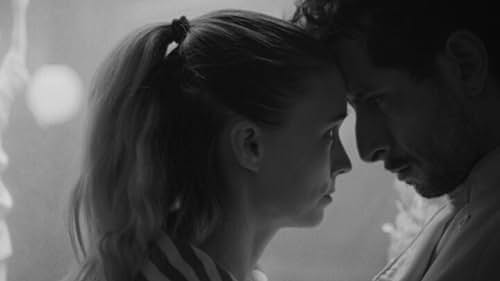
Set at a restaurant that caters to tourists in Times Square, Alonso Ruizpalacios’s La Cocina, adapted from Arnold Wesker’s 1957 play The Kitchen, revolves around Pedro (Raúl Briones), an undocumented Mexican line cook, and Julia (Rooney Mara), a white American working front of house. When $800 goes missing from the till, triggering an investigation by restaurant management, their love story derails. Throughout, Ruizpalacios allows the Grill to be both exactly what it is—a specific workplace with its own Kitchen Confidential-style rituals and pecking order—and a microcosm of American capitalism. “American” in the broadest sense since, as Pedro reminds us, “America is not a country.”
In an important scene, the Grill’s second-generation Mexican American manager, Luis (Eduardo Olmos), is interrogating Pedro, whom he suspects of having stolen the money to pay for the abortion that Julia wants and, coincidentally, would cost $800. While the intransigent line cook sidesteps Luis...
In an important scene, the Grill’s second-generation Mexican American manager, Luis (Eduardo Olmos), is interrogating Pedro, whom he suspects of having stolen the money to pay for the abortion that Julia wants and, coincidentally, would cost $800. While the intransigent line cook sidesteps Luis...
- 10/22/2024
- by William Repass
- Slant Magazine


Filming has begun in Scotland on Big Beach’s adaptation of Borges And Me starring Fionn Whitehead, Luis Gnecco, and Alan Cumming.
Marc Turtletaub directs from a screenplay by Oren Moverman in which the memoir’s author Jay Parini finds himself stuck in a Morris Minor chauffeuring the brilliant, blind Argentine writer Jorge Luis Borges through Scotland in 1970.
As a young student, Parini harbours dreams of becoming a writer and struggles to make sense of the 70-year-old, irrepressible Borges, until events take a surreal turn, leading the men to a place where they find common ground. The cast includes Peter Mullan and Harriet Sansom Harris.
Marc Turtletaub directs from a screenplay by Oren Moverman in which the memoir’s author Jay Parini finds himself stuck in a Morris Minor chauffeuring the brilliant, blind Argentine writer Jorge Luis Borges through Scotland in 1970.
As a young student, Parini harbours dreams of becoming a writer and struggles to make sense of the 70-year-old, irrepressible Borges, until events take a surreal turn, leading the men to a place where they find common ground. The cast includes Peter Mullan and Harriet Sansom Harris.
- 10/2/2024
- ScreenDaily


Fionn Whitehead and Luis Gnecco are set to star in Borges and Me, an adaptation of Jay Parini’s memoir of his 1970s journey through the Scottish Highlands with renowned Argentine writer Jorge Luis Borges. Parini is best known for his historical novel The Last Station, which was adapted as an Oscar-nominated feature by Michael Hoffman in 2009.
Dunkirk actor Whitehead, fresh off his performance as Pip opposite Olivia Colman’s Miss Havisham in the FX/BBC production of Great Expectations, will play Parini, with Chilean-Italian Gnecco, best known for his roles in Neruda, No, and A Fantastic Woman, as Borges. The cast also includes Alan Cumming, Peter Mullan, and Harriet Sansom Harris.
In Borges and Me, Parini, a 23-year-old shy student who dreams of becoming a writer, finds himself stuck in chauffeuring the brilliant, blind Borges, aged 70, through Scotland. At first, Parini is at a loss to make sense of the wild,...
Dunkirk actor Whitehead, fresh off his performance as Pip opposite Olivia Colman’s Miss Havisham in the FX/BBC production of Great Expectations, will play Parini, with Chilean-Italian Gnecco, best known for his roles in Neruda, No, and A Fantastic Woman, as Borges. The cast also includes Alan Cumming, Peter Mullan, and Harriet Sansom Harris.
In Borges and Me, Parini, a 23-year-old shy student who dreams of becoming a writer, finds himself stuck in chauffeuring the brilliant, blind Borges, aged 70, through Scotland. At first, Parini is at a loss to make sense of the wild,...
- 10/2/2024
- by Scott Roxborough
- The Hollywood Reporter - Movie News
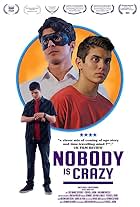

Stars: Manuel Gutierrez, Frederico J. Arioni, Lara Ammi Wheeler, Kiran Sharbis, Paula Arioni, Alicia Arioni | Written and Directed by Frederico J. Arioni
The future is as irreversible as the rigid yesterday, this is the doctrine posited by Jorge Luis Borges that writer-director, Frederico J. Arioni, chooses to explore.
We are introduced to our protagonist, Rafael J. Blanco or Rafa (Manuel Gutierrez), a 16-year-old boy struggling with his obsessive-compulsive disorder (“Ocd”) which entraps him in the rigidity of his mind. Of course, Rafa is also growing into the man he will one day become and is desperate to find himself in the world.
After attending a self-help group, Rafa meets a young, masked man who calls himself “Nobody” (played by writer/director Frederico Arioni) and who claims to be a time traveller. Of course, Nobody’s and Rafa’s world views are diametrically opposed making their blossoming friendship an interesting source...
The future is as irreversible as the rigid yesterday, this is the doctrine posited by Jorge Luis Borges that writer-director, Frederico J. Arioni, chooses to explore.
We are introduced to our protagonist, Rafael J. Blanco or Rafa (Manuel Gutierrez), a 16-year-old boy struggling with his obsessive-compulsive disorder (“Ocd”) which entraps him in the rigidity of his mind. Of course, Rafa is also growing into the man he will one day become and is desperate to find himself in the world.
After attending a self-help group, Rafa meets a young, masked man who calls himself “Nobody” (played by writer/director Frederico Arioni) and who claims to be a time traveller. Of course, Nobody’s and Rafa’s world views are diametrically opposed making their blossoming friendship an interesting source...
- 8/30/2024
- by Joe Hennessy
- Nerdly
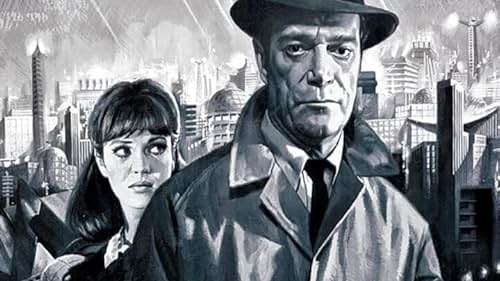
Much has been said of the overwhelming ingenuity of Jean-Luc Godard’s early films, but less so about just how well the director knew how to work around budgetary limitations. Alphaville, a dystopian sci-fi noir set in an Orwellian world of omnipresent surveillance run by a malevolent artificial intelligence, sounds at first blush like a large-scale work filled with the sort of macro world-building one typically sees in blockbusters. But Godard, working with next to no resources, captures the oppressiveness of totalitarian government through the claustrophobic conditions of repressed citizens. Ordinary Parisian streets and buildings are captured as they are, though in inky shadow, so that a certain kind of present-day dilapidation comes to suggest futuristic social decay.
Godard takes private detective Lemmy Caution and illustrates Alphaville’s themes of social tension and incipient fascism by demolishing the man’s image. Godard secured Eddie Constantine, who had already played Caution...
Godard takes private detective Lemmy Caution and illustrates Alphaville’s themes of social tension and incipient fascism by demolishing the man’s image. Godard secured Eddie Constantine, who had already played Caution...
- 8/4/2024
- by Jake Cole
- Slant Magazine


Even after rumors of a Simpsons-esque dolphin fetish surfaced online, a story about J.D. Vance’s penchant for couch-humping continues to dog the vice presidential candidate. Sure the story is clearly untrue, but nobody seems to mind.
The joke’s longevity has now been further extended by Vance himself, after he made a comment about his wife forcing him to sleep on the couch. It’s unclear how many injuries were sustained by people frantically rushing to their devices to make jokes.
The Vance rumor clearly began as a joke, an easily-debunkable claim on social media that the 2016 book Hillbilly Elegy: A Memoir of a Family and Culture in Crisis contained a graphic remembrance of the time Vance got intimate with “an inside-out latex glove shoved between two couch cushions.” In retrospect, it’s too bad that we never got to see this scene brought to life by Oscar-winning filmmaker Ron Howard.
The joke’s longevity has now been further extended by Vance himself, after he made a comment about his wife forcing him to sleep on the couch. It’s unclear how many injuries were sustained by people frantically rushing to their devices to make jokes.
The Vance rumor clearly began as a joke, an easily-debunkable claim on social media that the 2016 book Hillbilly Elegy: A Memoir of a Family and Culture in Crisis contained a graphic remembrance of the time Vance got intimate with “an inside-out latex glove shoved between two couch cushions.” In retrospect, it’s too bad that we never got to see this scene brought to life by Oscar-winning filmmaker Ron Howard.
- 7/31/2024
- Cracked
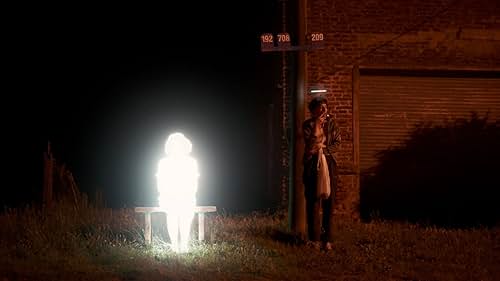
In movies, small towns and big miracles go well together. Everybody knows each other there, news travels fast and city slickers — with their cynicism and logic and skepticism — rarely intrude. So it is with “Chronicles of a Wandering Saint,” a winsome comedy-drama about the residents of Santa Rita, a small coastal town in Argentina where a woman makes a startling discovery.
Rita (Monica Villa), a devout married woman who spends her days chatting and gossiping with her circle of churchgoing friends, believes she has found a religious statue that was presumed lost forever. The discovery gives Rita exactly what she’s yearning for: the opportunity to stand out and be celebrated and — at least within the town’s limits — famous and admired.
Rita craves attention, yet she’s blind to the efforts of her longtime husband Norberto (Horacio Anibal Marassi), who works nights at a neighborhood bar and is trying...
Rita (Monica Villa), a devout married woman who spends her days chatting and gossiping with her circle of churchgoing friends, believes she has found a religious statue that was presumed lost forever. The discovery gives Rita exactly what she’s yearning for: the opportunity to stand out and be celebrated and — at least within the town’s limits — famous and admired.
Rita craves attention, yet she’s blind to the efforts of her longtime husband Norberto (Horacio Anibal Marassi), who works nights at a neighborhood bar and is trying...
- 7/4/2024
- by Rene Rodriguez
- Variety Film + TV


Historically, the relationship between Hollywood and European comic books has been fraught with mutual distrust and cultural dissonance. Not to disparage Steven Spielberg — one of our national treasures — but his 2011 adaptation of The Adventures of Tintin was a bit of a disaster. And when La Femme Nikita director Luc Besson fulfilled a childhood fantasy in 2017 by bankrolling Valerian and the City of a Thousand Planets out of his own pocket, the most expensive independent movie ever made landed with the thud of a global box office bomb.
But there’s hope on the horizon. European comic books — specifically, the Franco-Belgian school spearheaded by the Tintin character and his creator Hergé — are both a multimillion Euro industry and a sumptuous art form with dozens of successful franchises waiting to be developed. N
ow that the offerings of Marvel and DC are beginning to feel a tad fatigued, to say the least,...
But there’s hope on the horizon. European comic books — specifically, the Franco-Belgian school spearheaded by the Tintin character and his creator Hergé — are both a multimillion Euro industry and a sumptuous art form with dozens of successful franchises waiting to be developed. N
ow that the offerings of Marvel and DC are beginning to feel a tad fatigued, to say the least,...
- 2/17/2024
- by Ernesto Lechner
- The Hollywood Reporter - Movie News

Rodrigo Moreno's The Delinquents is screening exclusively on Mubi in many countries.The Delinquents.Words have no owner. They simply are. They live in the speakers of a language, but no one has possession of a verb or a noun. If anyone can come close to such ownership, it is an artist, who puts the word in a complex combination that is theirs alone. A filmmaker's material is not words—though some might say a shot is its equivalent—but rather the world. Through framing, cutting, and duration, the director makes a movie their own, yet what is shot does not obey the will of the filmmaker. The material of the world is the filmmaker's lyrics, and the world does not belong to them.The arrangement and rearrangement of material—whether of words or of the world when it is filmed—into new works of art can be linked...
- 12/18/2023
- MUBI

Buenos Aires — Delivering a masterclass in Buenos Aires just days after the election victory of far-right libertarian Javier Milei on Nov. 18, Cannes Film Festival head Thierry Frémaux voiced his support for Argentina’s Incaa public sector film-tv agency, which Milei has promised to destroy.
Frémaux’s one and brief direct reference to the Incaa – which oversees Argentina’s crucial federal film funding, without which much of Argentine filmmaking would wither – came towards the end of a 90-minute masterclass entitled Cinema (of) Tomorrow.
“Cinema is not about to die, it’s about to live again,” Frémaux argued. “Cinema is in extraordinary good health. This year’s Cannes is said to have been one of the greatest in history and that’s due to the quality of the work of the artists, professionals and of reviewers,” he enthused.
Equally, he argued, the “new era of cinema” will see the “equal importance of...
Frémaux’s one and brief direct reference to the Incaa – which oversees Argentina’s crucial federal film funding, without which much of Argentine filmmaking would wither – came towards the end of a 90-minute masterclass entitled Cinema (of) Tomorrow.
“Cinema is not about to die, it’s about to live again,” Frémaux argued. “Cinema is in extraordinary good health. This year’s Cannes is said to have been one of the greatest in history and that’s due to the quality of the work of the artists, professionals and of reviewers,” he enthused.
Equally, he argued, the “new era of cinema” will see the “equal importance of...
- 11/30/2023
- by John Hopewell
- Variety Film + TV


At the height of Umberto Eco’s popularity, it may have been tempting to dismiss the Italian scholar and novelist as too representative of his own time, a purveyor of entertainments for hip intellectuals with a poststructuralist bent. His obsessions with semiotics and fakes, conspiracy theories and heretical Christian sects of the late Middle Ages, seemed quirky, meta, and all in good fun. But in the years since his death in 2016, they’ve turned out to be uncannily prescient, as Davide Ferrario’s Umberto Eco: A Library of the World aims to prove.
This biographical documentary isn’t a peek behind the curtain into a public intellectual’s private life. Rather, it’s a reframing of the preoccupations of a thinker who’s no longer very fashionable. In the process, it becomes a timely epistemological rumination on the difference between knowledge and information, the relationship between memory and technology.
In...
This biographical documentary isn’t a peek behind the curtain into a public intellectual’s private life. Rather, it’s a reframing of the preoccupations of a thinker who’s no longer very fashionable. In the process, it becomes a timely epistemological rumination on the difference between knowledge and information, the relationship between memory and technology.
In...
- 6/25/2023
- by William Repass
- Slant Magazine


There are movies that grab you by the throat and refuse to let go until the story ends. And there are others that playfully take your hand, guiding you into stories that blossom and fold in on themselves several times over, leading to endings that are more like beginnings.
For the past five years, a crop of films from Argentina has been specializing in the latter type, telling long, winding, labyrinthine stories inspired by the French Nouvelle Vague — especially Jacques Rivette’s Celine and Julie Go Boating and his serial epic, Out 1 — as well as Latin American postmodernists like Jorge Luis Borges, Julio Cortázar and Roberto Bolaño.
With mammoth running times and multiple characters, Mariano Llinás’ six-part, 13-hour La Flor (2018) and Laura Citarella’s two-part, six-hour Trenque Lauquen (2022), are the best-known examples of the genre. Enigmatic and absorbing, they have found a fanbase at festivals and on specialty streaming sites,...
For the past five years, a crop of films from Argentina has been specializing in the latter type, telling long, winding, labyrinthine stories inspired by the French Nouvelle Vague — especially Jacques Rivette’s Celine and Julie Go Boating and his serial epic, Out 1 — as well as Latin American postmodernists like Jorge Luis Borges, Julio Cortázar and Roberto Bolaño.
With mammoth running times and multiple characters, Mariano Llinás’ six-part, 13-hour La Flor (2018) and Laura Citarella’s two-part, six-hour Trenque Lauquen (2022), are the best-known examples of the genre. Enigmatic and absorbing, they have found a fanbase at festivals and on specialty streaming sites,...
- 5/18/2023
- by Jordan Mintzer
- The Hollywood Reporter - Movie News

Brandon Cronenberg shows no fear returning to images and themes popularized by his father David. Even the literary influences apparent in his work––Phillip K. Dick, Jorge Luis Borges, J. G. Ballard––are close. Yet his third feature, Infinity Pool, makes much clearer what his own voice looks like: a genuinely provocative fantasy of male masochism as a response to guilt. Set in a luxurious resort in the imaginary country of Li Tolqa, it follows novelist failson James Forster (Alexander Skarsgård) on a dizzying trip with his wife Em (Cleopatra Coleman). After having dinner with fellow tourists Gabi and her husband Alban (Jalil Lespert), she gives him a hand job. Driving the quartet home, James kills a local farmer in a car accident. When he’s arrested the following day, Infinity Pool takes a strange leap: the culture of Li Tolqa allows guilty criminals to create clones to be executed in their place.
- 2/2/2023
- by Steve Erickson
- The Film Stage

In “On Exactitude in Science,” a 1946 short story from the Argentinian writer Jorge Luis Borges, a fictional 17th century chronicler describes a guild of cartographers who make ever-bigger maps until, eventually, they create a “Map of the Empire whose size was that of the Empire, and which coincided point for point with it.” As tastes change, later generations declare the map “Useless” and leave the great work to wither in the desert sun, where “Animals and Beggars” live within the map’s “Tattered Ruins.” The brief tale manages to probe the nature of inquiry and spoof the history of empire, quite a feat for a piece that’s only a paragraph long.
Watching the films of Alejandro González Iñárritu, the multi-Oscar-winning writer-director behind The Revenant, Birdman, and Babel, can feel like watching both Borges and the cartographers work at the same time. He’s a man who often seems to...
Watching the films of Alejandro González Iñárritu, the multi-Oscar-winning writer-director behind The Revenant, Birdman, and Babel, can feel like watching both Borges and the cartographers work at the same time. He’s a man who often seems to...
- 12/20/2022
- by Josh Marcus
- The Independent - Film


This interview with Alejandro G. Iñárritu first ran in two different parts in the Race Begins and International issues of TheWrap’s awards magazine.
Alejandro G. Iñárritu would like to get this straight from the start: “Bardo, False Chronicle of a Handful of Truths” is not an autobiography. Its lead character, played by Daniel Giménez Cacho, is Silverio Gama, a movie director who looks like Iñárritu and who moved from Mexico to Los Angeles early in his career, just like Iñárritu; he also has a family like Iñárritu’s and he and his wife lost a child, like Iñárritu. But “Bardo” is a fantasia, a dreamscape and, insisted the writer-director, anything but a factual accounting of his life.
“It has taken me a long time to make myself clear that this is not an autobiography,” he said. “For me, every autobiography is a lie. Autobiography pretends it owns the truth,...
Alejandro G. Iñárritu would like to get this straight from the start: “Bardo, False Chronicle of a Handful of Truths” is not an autobiography. Its lead character, played by Daniel Giménez Cacho, is Silverio Gama, a movie director who looks like Iñárritu and who moved from Mexico to Los Angeles early in his career, just like Iñárritu; he also has a family like Iñárritu’s and he and his wife lost a child, like Iñárritu. But “Bardo” is a fantasia, a dreamscape and, insisted the writer-director, anything but a factual accounting of his life.
“It has taken me a long time to make myself clear that this is not an autobiography,” he said. “For me, every autobiography is a lie. Autobiography pretends it owns the truth,...
- 11/29/2022
- by Steve Pond
- The Wrap


Click here to read the full article.
Alejandro Gonzalez
In Netflix’s Bardo, False Chronicle of a Handful of Truths, Daniel Giménez Cacho stars as Silverio Gama, a renowned documentarian who is set to receive a prestigious award for his career as a journalist upon his return to his native Mexico after living with his family in Los Angeles for decades. The epic black comedy, which is Mexico’s official Oscar submission for best international feature, is an extremely personal project from four-time Oscar-winning writer-director Alejandro G. Iñárritu, who likens his latest film to the Mexican soup called pozole — “a mix of an enormous amount of things” — that speaks to the shared loneliness of the immigrant experience, particularly for those who feel without a homeland. The film sees Gama weaving throughout his own memories and the present day as well as interacting with figures central to Mexico’s complex history and culture.
Alejandro Gonzalez
In Netflix’s Bardo, False Chronicle of a Handful of Truths, Daniel Giménez Cacho stars as Silverio Gama, a renowned documentarian who is set to receive a prestigious award for his career as a journalist upon his return to his native Mexico after living with his family in Los Angeles for decades. The epic black comedy, which is Mexico’s official Oscar submission for best international feature, is an extremely personal project from four-time Oscar-winning writer-director Alejandro G. Iñárritu, who likens his latest film to the Mexican soup called pozole — “a mix of an enormous amount of things” — that speaks to the shared loneliness of the immigrant experience, particularly for those who feel without a homeland. The film sees Gama weaving throughout his own memories and the present day as well as interacting with figures central to Mexico’s complex history and culture.
- 11/16/2022
- by Tyler Coates
- The Hollywood Reporter - Movie News

Laura Paredes in Trenque Lauquen.Fittingly for a film tracking a botanist along her quest for an ultra-rare flower, Laura Citarella’s Trenque Lauquen unfurls like the network of a rose, each of its myriad tales unveiling and spilling into the next. Stretched across 250 minutes, split into twelve chapters, and divided into two parts, the film is a maze of forking paths, the cinematic equivalent of a short story by Jorge Luis Borges, who hovers above it as an essential touchstone. This is, after all, a Pampero Cine production, the Buenos Aires collective that spawned Mariano Llinás’s 2018 epic La Flor, another sprawling multi-genre pastiche that looked to the rhizomatic writings by Borges and other Río de la Plata scribes for inspiration. Back in 1969, together with director Hugo Santiago and fellow writer Adolfo Bioy Casares, Borges co-wrote Invasión, a portrait of a fictional city, Aquileia, under an endless siege. Modeled on Buenos Aires,...
- 10/10/2022
- MUBI

Premiering on Dn’s pages today Man in the Morgue from cross-cultural interdisciplinary architect-turned-filmmaker Omar Kakar, takes an urban gothic noir trip into the disorientating world of a NYC embalmer whose discovery of a mysterious memento mori on his mortuary table infuses him with a renewed sense of life. A mysterious black and white cross-genre film with minimal dialogue which intentionally embraced a ‘less is more’ ethos in its construction, Man in the Morgue brings its protagonist (and us along with him) to the terrifying yet perhaps ultimately comforting realisation that death is only ever just around the corner. Perhaps a sign of his architectural mindset, Kakar is able to craft a genre-straddling mystery which raises interesting questions in the mind of the audience, yet never leaves them adrift in a sea of confusion. You can discover this yourself below, after which we dig into Kakar’s detailed process of...
- 10/3/2022
- by Sarah Smith
- Directors Notes
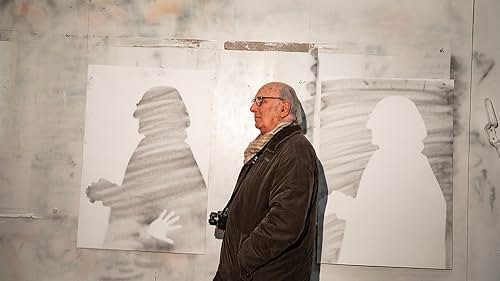
“Walls Can Talk,” the latest film by Spain Carlos Saura, director of “Raise Ravens,” “Deprisa, Deprisa” and “Carmen,” has been acquired for intentional sales by Madrid-based Latido.
Produced by María del Puy Alvarado at Malvalanda and distributed in Spain by José Maria nd Miguel Morales’ Wanda Vision, “Walls Can Talk” will world premiere at the San Sebastian Film Festival as an Rtve Gala.
The doc feature sees Saura conduct his own inquest into the origins of art, directing and for once starring in a film. In it, he visits masterpieces of paleolithic art– in Spain’s Altamira and El Castillo caves, for instance – and asks modern (Miquel Barceló) and graffiti artists and urban creators about what drives them to paint.
Also taking in the extraordinary art at France’s Chauvet Cave – “painting’s great masterpiece,” as it is described in the film – “Walls Can Talk” (“Las paredes hablan”) suggests that...
Produced by María del Puy Alvarado at Malvalanda and distributed in Spain by José Maria nd Miguel Morales’ Wanda Vision, “Walls Can Talk” will world premiere at the San Sebastian Film Festival as an Rtve Gala.
The doc feature sees Saura conduct his own inquest into the origins of art, directing and for once starring in a film. In it, he visits masterpieces of paleolithic art– in Spain’s Altamira and El Castillo caves, for instance – and asks modern (Miquel Barceló) and graffiti artists and urban creators about what drives them to paint.
Also taking in the extraordinary art at France’s Chauvet Cave – “painting’s great masterpiece,” as it is described in the film – “Walls Can Talk” (“Las paredes hablan”) suggests that...
- 9/2/2022
- by John Hopewell
- Variety Film + TV
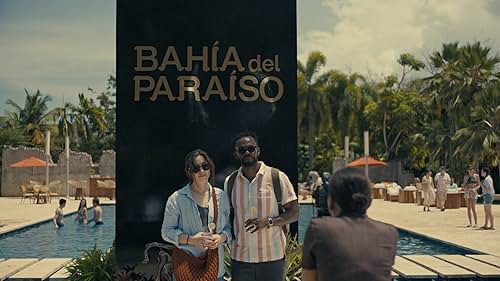
“The Resort” opens with the beachy beat of David Byrne and Brian Eno’s “Strange Overtones,” — strange indeed, as the song plays under an epigraph with something slightly wrong.
Two quotes wipe across the screen. First: “The pursuit to capture your past is a waste of time. The past lives in the past and is therefore non-existent in the present. Time travel has not been invented.” These words are credited to Illán Iberra’s 1978 book “El Espejo,” or “The Mirror” in English. Next, a retrraction: in 1993’s “La Desilución del Tiempo” (“The Disappointment of Time”), Iberra writes, “I made many idiotic and pretentious statements in my youth.”
Episode 1 of the Peacock adventure comedy is titled “The Disappointment of Time,” and at first, it seems that creator/showrunner Andy Siara (“Palm Springs”) is hoping to position the ideas of “The Resort” in conversation with Iberra’s work. But Iberra doesn’t exist.
Two quotes wipe across the screen. First: “The pursuit to capture your past is a waste of time. The past lives in the past and is therefore non-existent in the present. Time travel has not been invented.” These words are credited to Illán Iberra’s 1978 book “El Espejo,” or “The Mirror” in English. Next, a retrraction: in 1993’s “La Desilución del Tiempo” (“The Disappointment of Time”), Iberra writes, “I made many idiotic and pretentious statements in my youth.”
Episode 1 of the Peacock adventure comedy is titled “The Disappointment of Time,” and at first, it seems that creator/showrunner Andy Siara (“Palm Springs”) is hoping to position the ideas of “The Resort” in conversation with Iberra’s work. But Iberra doesn’t exist.
- 7/29/2022
- by Selome Hailu
- Variety Film + TV

Imagine, if you will, a massive Venn diagram with aquatic salamanders, lesser-known passages from Revelations, “The Last House on the Left,” fried pork byproducts, and hot air balloons.
We can’t definitively state that Season 2 of the Fxx series “Dicktown” is the lone inhabitant of that sliver in the middle, but it’s almost certainly the only animated detective show that also has an impish parody of Tintin arriving with fanfare at the heart of its sophomore season.
The show is driven by the same expansive web of Things that preoccupy its creator/writer/stars John Hodgman and David Rees, a creative engine that made its first batch of episodes in 2020 so distinct. “Dicktown” tracks the ongoing hyphenated tribulations of down-on-his-luck, out-of-work John Hunchman (Hodgman) and his foe-turned-friend investigative partner David Purefoy (Rees).
This new season, available to stream on Hulu, is still parceled out in 12-minute segments (it’s...
We can’t definitively state that Season 2 of the Fxx series “Dicktown” is the lone inhabitant of that sliver in the middle, but it’s almost certainly the only animated detective show that also has an impish parody of Tintin arriving with fanfare at the heart of its sophomore season.
The show is driven by the same expansive web of Things that preoccupy its creator/writer/stars John Hodgman and David Rees, a creative engine that made its first batch of episodes in 2020 so distinct. “Dicktown” tracks the ongoing hyphenated tribulations of down-on-his-luck, out-of-work John Hunchman (Hodgman) and his foe-turned-friend investigative partner David Purefoy (Rees).
This new season, available to stream on Hulu, is still parceled out in 12-minute segments (it’s...
- 4/1/2022
- by Steve Greene
- Indiewire
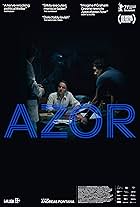

Andreas Fontana’s haunting Azor, co-written with Mariano Llinas, stars Fabrizio Rongione and Stéphanie Cléau: “The cinematography was done by Gabriel Sandru and we were talking a lot about that.”
Andreas Fontana’s Azor, co-written with Mariano Llinas, shot by Gabriel Sandru with costumes by Simona Martínez, stars Fabrizio Rongione and Stéphanie Cléau.
Andreas Fontana with Anne-Katrin Titze on Jorge Luis Borges: “Borges of course in terms of literary inspiration is very important.”
In my discussion with the director we touch on the influence of Howard Hawks and Jorge Luis Borges, Joan Didion’s codes and games, casting director Alexandre Nazarian, the cinematography, costumes, and filming in Argentina with non-professional actors, “men who are very impressive”.
Boredom is seen as “divine punishment,” old money...
Andreas Fontana’s Azor, co-written with Mariano Llinas, shot by Gabriel Sandru with costumes by Simona Martínez, stars Fabrizio Rongione and Stéphanie Cléau.
Andreas Fontana with Anne-Katrin Titze on Jorge Luis Borges: “Borges of course in terms of literary inspiration is very important.”
In my discussion with the director we touch on the influence of Howard Hawks and Jorge Luis Borges, Joan Didion’s codes and games, casting director Alexandre Nazarian, the cinematography, costumes, and filming in Argentina with non-professional actors, “men who are very impressive”.
Boredom is seen as “divine punishment,” old money...
- 12/29/2021
- by Anne-Katrin Titze
- eyeforfilm.co.uk

Memoria Memoria is the first film Apichatpong Weerasethakul shot outside his native Thailand, and the first in English. That should be enough to make it a debut unto itself, but the deeper I dove into his beguiling, mesmerizing South American adventure, truly one of the finest unveiled on the Croisette this year, the more all those “firsts” began to feel a little misleading. Sure, in casting Tilda Swinton as his lead, Apichatpong has recruited a major actress in the English-speaking world, but her Jessica, a British botanist traveling through Colombia, spends far more time speaking in Spanish than she does in her mother tongue. As for the luxurious Andean locale, you’d be forgiven for mistaking the jungles Memoria ushers you into for stretches of the rainforests that hosted Apichatpong’s Thai works. It’s as if the filmmaker and the land he captures shared an ineffable, almost symbiotic connection,...
- 7/17/2021
- MUBI

“One September day,” begins the title card at the head of the New Directors/New Films-premiering Aleph, “I met Rodrigo near 23rd Street for lunch. He talked about microcosms, labyrinths, connectness and Borges…” And with those deceptively casual opening lines, filmmaker Iva Radivojevic takes us on a globetrotting (10 countries on five continents!) journey through the porous borderlands of documentary and fiction that’s as much philosophical as it is observational. Traversing both map and territory, Aleph draws its inspiration from the Jorge Luis Borges short story of the same name, a brief tale that literalizes the Hamlet quote (“O God! I […]
The post “Everything You’re Feeling or Seeing in the Moment Comes Into the Story”: Director Iva Radivojevic on Her Borgesian Tale of Wanderlust and Connection, Aleph first appeared on Filmmaker Magazine.
The post “Everything You’re Feeling or Seeing in the Moment Comes Into the Story”: Director Iva Radivojevic on Her Borgesian Tale of Wanderlust and Connection, Aleph first appeared on Filmmaker Magazine.
- 5/7/2021
- by Scott Macaulay
- Filmmaker Magazine-Director Interviews

“One September day,” begins the title card at the head of the New Directors/New Films-premiering Aleph, “I met Rodrigo near 23rd Street for lunch. He talked about microcosms, labyrinths, connectness and Borges…” And with those deceptively casual opening lines, filmmaker Iva Radivojevic takes us on a globetrotting (10 countries on five continents!) journey through the porous borderlands of documentary and fiction that’s as much philosophical as it is observational. Traversing both map and territory, Aleph draws its inspiration from the Jorge Luis Borges short story of the same name, a brief tale that literalizes the Hamlet quote (“O God! I […]
The post “Everything You’re Feeling or Seeing in the Moment Comes Into the Story”: Director Iva Radivojevic on Her Borgesian Tale of Wanderlust and Connection, Aleph first appeared on Filmmaker Magazine.
The post “Everything You’re Feeling or Seeing in the Moment Comes Into the Story”: Director Iva Radivojevic on Her Borgesian Tale of Wanderlust and Connection, Aleph first appeared on Filmmaker Magazine.
- 5/7/2021
- by Scott Macaulay
- Filmmaker Magazine - Blog


A consummate man of letters, Jorge Luis Borges frequently receives the vague honorific of being a ‘writer’s writer,” often a fancy way of saying that his work is too complicated to adapt to film. Borges’ fascination with symbols and language, our imperfect tools for conceiving the world, manifested in stories where literary sleight of hand turns the mundane inside out to find the miraculous, where maps overtake the territory they represent and one walks in labyrinths without end.
Continue reading ‘Aleph’: A Borges-Inspired Odyssey Around the Globe [Nd/Nf Review] at The Playlist.
Continue reading ‘Aleph’: A Borges-Inspired Odyssey Around the Globe [Nd/Nf Review] at The Playlist.
- 5/7/2021
- by Joe Blessing
- The Playlist

Films and references to cultural traditions may flicker past your inner eye in Iva Radivojevic’s Aleph, a luminous take on Jorge Luis Borges, narrated by Anne Waldman, which is a highlight of the 50th anniversary edition of New Directors/New Films. The Thai ghost may be Uncle Boonmee’s brother from Apichatpong Weerasethakul’s picture. An ad for Jim Jarmusch’s Paterson graces the back pages of a newspaper in Buenos Aires and Oscar Wilde’s Happy Prince is not the only one who is able to see without eyes.
The woman who disappears into the painting in Aleph feels strangely related to the old couple who befriend and haunt Naomi Watts in David Lynch’s Mulholland Drive, only to appear downsized out of a paper bag later on.
During my conversation with the filmmaker, I learned that Roland Barthes is responsible for the like/dislike structure in...
The woman who disappears into the painting in Aleph feels strangely related to the old couple who befriend and haunt Naomi Watts in David Lynch’s Mulholland Drive, only to appear downsized out of a paper bag later on.
During my conversation with the filmmaker, I learned that Roland Barthes is responsible for the like/dislike structure in...
- 4/29/2021
- by Anne-Katrin Titze
- eyeforfilm.co.uk


Aleph director Iva Radivojević: “The idea is that each character leaves us off with a clue as to where we’re going next.”
On the afternoon of the 93rd Academy Awards, a reference to David Lynch and a scene in Mulholland Drive, Luis Buñuel’s The Phantom Of Liberty, Apichatpong Weerasethakul’s Uncle Boonmee Who Can Recall His Past Lives and Luminous People (segment in State of the World), Likes And Dislikes by Roland Barthes, Andy Warhol, Alain Resnais, Aleph’s narrator Anne Waldman, and a short story by Jorge Luis Borges all came up in my conversation with Iva Radivojevic, the director/writer/editor/ of Aleph, a highlight of the 50th anniversary edition of New Directors/New Films.
Iva Radivojević on Jorge Luis Borges’ Aleph: “I used the story, the myth of this portal of Aleph as a starting point, the search for this portal. The whole film starts...
On the afternoon of the 93rd Academy Awards, a reference to David Lynch and a scene in Mulholland Drive, Luis Buñuel’s The Phantom Of Liberty, Apichatpong Weerasethakul’s Uncle Boonmee Who Can Recall His Past Lives and Luminous People (segment in State of the World), Likes And Dislikes by Roland Barthes, Andy Warhol, Alain Resnais, Aleph’s narrator Anne Waldman, and a short story by Jorge Luis Borges all came up in my conversation with Iva Radivojevic, the director/writer/editor/ of Aleph, a highlight of the 50th anniversary edition of New Directors/New Films.
Iva Radivojević on Jorge Luis Borges’ Aleph: “I used the story, the myth of this portal of Aleph as a starting point, the search for this portal. The whole film starts...
- 4/29/2021
- by Anne-Katrin Titze
- eyeforfilm.co.uk
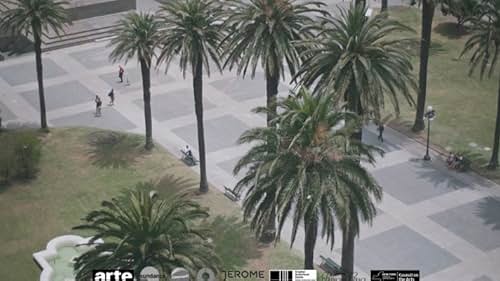
A world premiere I’m highly anticipating out of the upcoming 2021 edition of New Directors/New Films is the second feature from Iva Radivojević, Aleph. From New Directors: In her magical, unpredictable second feature, Belgrade-born, globe-hopping artist Iva Radivojević has created a labyrinthine vision inspired by the writings of Jorge Luis Borges. Using a variety of visual styles that miraculously cohere into one unified and unique aesthetic, the multihyphenate filmmaker and her collaborators offer an episodic structure bending time and space, in which one character seems to unwittingly pass the narrative baton to the next, fashioning a film whose scope extends […]
The post Trailer Watch: Iva Radivojević’s Aleph first appeared on Filmmaker Magazine.
The post Trailer Watch: Iva Radivojević’s Aleph first appeared on Filmmaker Magazine.
- 4/7/2021
- by Scott Macaulay
- Filmmaker Magazine - Blog

A world premiere I’m highly anticipating out of the upcoming 2021 edition of New Directors/New Films is the second feature from Iva Radivojević, Aleph. From New Directors: In her magical, unpredictable second feature, Belgrade-born, globe-hopping artist Iva Radivojević has created a labyrinthine vision inspired by the writings of Jorge Luis Borges. Using a variety of visual styles that miraculously cohere into one unified and unique aesthetic, the multihyphenate filmmaker and her collaborators offer an episodic structure bending time and space, in which one character seems to unwittingly pass the narrative baton to the next, fashioning a film whose scope extends […]
The post Trailer Watch: Iva Radivojević’s Aleph first appeared on Filmmaker Magazine.
The post Trailer Watch: Iva Radivojević’s Aleph first appeared on Filmmaker Magazine.
- 4/7/2021
- by Scott Macaulay
- Filmmaker Magazine-Director Interviews
Celebrating its 50th anniversary edition this year, New Directors/New Films annually brings together the most promising new filmmaking voices. The Museum of Modern Art and Film at Lincoln Center have now announced the lineup for this year’s slate, taking place April 28 – May 8 via virtual cinema, with in-person screenings extending through May 13 at Flc. The festival will also include a free retrospective looking back at previously selected work by Lee Chang-dong, Charles Burnett, Chantal Akerman, Christopher Nolan and more.
Check out the lineup below, along with links to reviews where available.
50th New Directors/New Films
Opening Night
El Planeta
Amalia Ulman, 2021, Spain, 80m
English and Spanish with English subtitles
With unforced deadpan humor, writer-director-star Amalia Ulman presents a captivating portrait in miniature of a mother and daughter barely scraping by in Spain’s northwestern seaside town Gijón. Whether shoplifting, trying to get out of paying for an extravagant meal,...
Check out the lineup below, along with links to reviews where available.
50th New Directors/New Films
Opening Night
El Planeta
Amalia Ulman, 2021, Spain, 80m
English and Spanish with English subtitles
With unforced deadpan humor, writer-director-star Amalia Ulman presents a captivating portrait in miniature of a mother and daughter barely scraping by in Spain’s northwestern seaside town Gijón. Whether shoplifting, trying to get out of paying for an extravagant meal,...
- 4/1/2021
- by Jordan Raup
- The Film Stage
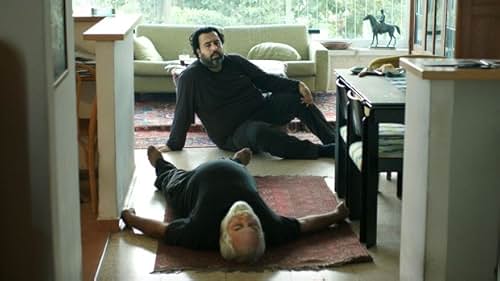
Cannes 2020: Tick-tock, stop the clock! Just like Fats Domino, in his debut feature, Dani Rosenberg tries to freeze time. When a filmmaker already quotes Jorge Luis Borges in his director’s notes, one half-expects what’s in store – in short, anything but your typical, easy-to-follow narrative. Dani Rosenberg’s The Death of Cinema and My Father Too, granted the Cannes 2020 label, combines shaky archive footage with fictional scenes, VHS short films and a whole subplot involving an Iranian military attack on Tel Aviv. Oh, and “House of the Rising Sun”, blaring its tale of a father who was “a gamblin’ man down in New Orleans”. And yet, despite all that jazz, ultimately it’s an extremely intimate affair about a son who doesn’t want to let go of his withering father. That sounds simple enough, but it takes some proper digging to get to the core, and Cannes’ stamp of approval.
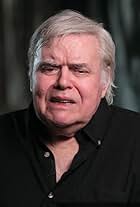

Scorn is one seriously disturbing game. Its emphasis on grotesque representations of the human form with a slightly alien twist is not only worthy of its influences — the H.R. Giger inspiration is clear — but showcases a level of body horror we rarely see in video games.
“The team has drawn visual inspiration from Swiss painter H.R. Giger and Polish painter Zdzislaw Beksinski,” Kowloon Nights, which partially funded the game, explained in a press release. “Conceptual inspiration has come from works by unique writers like Franz Kafka and Jorge Luis Borges, horror and sci-fi writers like Thomas Ligotti and J.G. Ballard, and the weird cinema of David Cronenberg and David Lynch.”
Since this game was first announced in 2014, it’s been bill as much more than a disturbing work of art. According to the tiny team of developers over at the Serbian studio Ebb Software, Scorn is actually a first-person...
“The team has drawn visual inspiration from Swiss painter H.R. Giger and Polish painter Zdzislaw Beksinski,” Kowloon Nights, which partially funded the game, explained in a press release. “Conceptual inspiration has come from works by unique writers like Franz Kafka and Jorge Luis Borges, horror and sci-fi writers like Thomas Ligotti and J.G. Ballard, and the weird cinema of David Cronenberg and David Lynch.”
Since this game was first announced in 2014, it’s been bill as much more than a disturbing work of art. According to the tiny team of developers over at the Serbian studio Ebb Software, Scorn is actually a first-person...
- 5/7/2020
- by Matthew Byrd
- Den of Geek
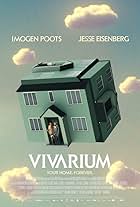

Feeling simultaneously overstuffed and undercooked, Lorcan Finnegan’s “Vivarium” tries to ring a warning bell about, well, a lot of things. In the end, though, it works best as a cautionary tale about the pitfalls of filmmakers biting off more than they can chew.
Clearly a lot of thought went into the film. The story of a young couple trapped in a purgatorial pre-fab housing complex, “Vivarium” tries to work as a consumerist satire, as an allegory about parenting and as a sci-fi thriller, but it never fully satisfies on any one front.
Jesse Eisenberg and Imogen Poots play a thirtysomething couple looking to take the plunge into homeownership. On a lark, they agree to visit a pre-fab suburb somewhere on the outskirts of town, mostly to gawk at the units that look like Monopoly houses painted in the uniquely unappealing shade of pea soup.
Also Read: John Krasinski's...
Clearly a lot of thought went into the film. The story of a young couple trapped in a purgatorial pre-fab housing complex, “Vivarium” tries to work as a consumerist satire, as an allegory about parenting and as a sci-fi thriller, but it never fully satisfies on any one front.
Jesse Eisenberg and Imogen Poots play a thirtysomething couple looking to take the plunge into homeownership. On a lark, they agree to visit a pre-fab suburb somewhere on the outskirts of town, mostly to gawk at the units that look like Monopoly houses painted in the uniquely unappealing shade of pea soup.
Also Read: John Krasinski's...
- 3/26/2020
- by Ben Croll
- The Wrap


Buenos Aires — For much of this century, Argentina’s Axel Kuschevatzky led a double life.
On one hand, he served as a hugely hard-working movie producer for Telefe, then Telefonica Studios, then Viacom Intl. Media Networks, bringing their much-needed finance and promotion clout to some of the finest South American titles of the last decade: “The Secret in Their Eyes,” “Wild Tales,” “The Clan” and “Neruda.”
On the other, he was a glamorous Academy Awards presenter for TNT, a journalist, radio commentator, occasional screenwriter and even actor, channeling his huge passion and knowledge of film and beyond -Billy Wilder, jazz.
Now he’s cut loose. Kuschevatzky’s launch of independent film production company Infinity Hill, with producers Phin Glynn (“Waiting for Anya”) and Cindy Teperman (“Animal”), was the biggest news at least partially related to Latin America at November’s Afm.
Variety caught Kuschevatzky at Ventana Sur on fire,...
On one hand, he served as a hugely hard-working movie producer for Telefe, then Telefonica Studios, then Viacom Intl. Media Networks, bringing their much-needed finance and promotion clout to some of the finest South American titles of the last decade: “The Secret in Their Eyes,” “Wild Tales,” “The Clan” and “Neruda.”
On the other, he was a glamorous Academy Awards presenter for TNT, a journalist, radio commentator, occasional screenwriter and even actor, channeling his huge passion and knowledge of film and beyond -Billy Wilder, jazz.
Now he’s cut loose. Kuschevatzky’s launch of independent film production company Infinity Hill, with producers Phin Glynn (“Waiting for Anya”) and Cindy Teperman (“Animal”), was the biggest news at least partially related to Latin America at November’s Afm.
Variety caught Kuschevatzky at Ventana Sur on fire,...
- 12/5/2019
- by John Hopewell
- Variety Film + TV
Six stories featuring the same four actors unfold in inventive and exasperating style in an arthouse ultramarathon
Six or so hours into Mariano Llinás’s 13-hours-plus arthouse ultramarathon, the third episode of the third chapter begins with a long bout of snoring. That’s the presiding meta spirit of this magnificent, inventive, playful, exasperating film, Argentina’s longest ever, shot over 10 years. In its nexus of stories, La Flor inevitably invokes the country’s fabulist god Jorge Luis Borges – but as if Llinás had given up on the metaphysics, stopped trying to exit the labyrinth and was content to watch folk passing through.
The director pops up at the beginning on a park bench to explain that its six stories, featuring the same four female actors, form a structure: four stories rising up with a beginning but no end (the petals), one totally enclosed central tale (the ovule), a closing...
Six or so hours into Mariano Llinás’s 13-hours-plus arthouse ultramarathon, the third episode of the third chapter begins with a long bout of snoring. That’s the presiding meta spirit of this magnificent, inventive, playful, exasperating film, Argentina’s longest ever, shot over 10 years. In its nexus of stories, La Flor inevitably invokes the country’s fabulist god Jorge Luis Borges – but as if Llinás had given up on the metaphysics, stopped trying to exit the labyrinth and was content to watch folk passing through.
The director pops up at the beginning on a park bench to explain that its six stories, featuring the same four female actors, form a structure: four stories rising up with a beginning but no end (the petals), one totally enclosed central tale (the ovule), a closing...
- 9/12/2019
- by Phil Hoad
- The Guardian - Film News


Warning: Do not read any further if you don’t want to read spoilers for Season 2 of “The Oa.”
When Netflix released the first season of “The Oa” way back in 2016, its big, mind-boggling ending left viewers with far more questions than answers. And more than two years later, Season 2 leaned hard into that same pattern, going even bigger and more mind-boggling.
This time around, Season 1’s philosophical musings about faith and storytelling were replaced with surprising plot twists befitting the season’s more film noir-esque storyline and one unexpectedly meta conclusion.
Many of the questions lingering from Season 1 — Was Prairie’s tale about being held captive real or just a story? Is she actually an angel? — were dispatched within the first 45 minutes of the second season, but by the last five a whole new set of questions had arisen to take their place.
Namely, what the heck just happened?...
When Netflix released the first season of “The Oa” way back in 2016, its big, mind-boggling ending left viewers with far more questions than answers. And more than two years later, Season 2 leaned hard into that same pattern, going even bigger and more mind-boggling.
This time around, Season 1’s philosophical musings about faith and storytelling were replaced with surprising plot twists befitting the season’s more film noir-esque storyline and one unexpectedly meta conclusion.
Many of the questions lingering from Season 1 — Was Prairie’s tale about being held captive real or just a story? Is she actually an angel? — were dispatched within the first 45 minutes of the second season, but by the last five a whole new set of questions had arisen to take their place.
Namely, what the heck just happened?...
- 3/29/2019
- by Reid Nakamura
- The Wrap


Buenos Aires — Mario Vargas Llosa, the great Peruvian novelist, once wrote that reality in Latin America is too compelling to ever be ignored in its fiction. Yet, as WWII raged, Jorge Luis Borges, perhaps the greatest of Argentine writers, pointedly published “Ficciones,” fantasy tales, often philosophical speculation given narrative form.
If this year’s Pci Film Directors Assn, showcase at Ventana Sur is anything to go by, some young Argentine filmmakers are having it both ways, creating films which straddle the fiction-reality divide, or enroll fabrication and myth to large effect. Their films, sneak peaked in brief extracts or teaser trailers at the Pci’s annual Work in Progress showcase during Ventana Sur, and underscored the diversity of Argentine filmmaking, a cause championed by Pci and its around 100 directors, and an indication of the depth of talent of Argentine filmmaking.
“7h 35” is a case in point. The feature debut of Javier Van de Couter,...
If this year’s Pci Film Directors Assn, showcase at Ventana Sur is anything to go by, some young Argentine filmmakers are having it both ways, creating films which straddle the fiction-reality divide, or enroll fabrication and myth to large effect. Their films, sneak peaked in brief extracts or teaser trailers at the Pci’s annual Work in Progress showcase during Ventana Sur, and underscored the diversity of Argentine filmmaking, a cause championed by Pci and its around 100 directors, and an indication of the depth of talent of Argentine filmmaking.
“7h 35” is a case in point. The feature debut of Javier Van de Couter,...
- 12/19/2018
- by John Hopewell
- Variety Film + TV


Performance, the 1970 British crime drama best known as Mick Jagger’s acting debut, had a challenging route to screen. But despite troubles with studio Warner Bros, the film, which defines the bohemian London of the 1960s, has gone on to be considered one of the best British films of all time.
A new book, Performance: The 50th Anniversary, written and compiled by Jay Glennie, tells the story of its chaotic production, gives a glimpse behind-the-scenes with over 500 images including many never seen before, and looks at its legacy through the eyes of star Jagger, as well as Nic Roeg, who directed the film alongside Donald Cammell and producer Sandy Lieberson. Glennie has given Deadline an exclusive look at the book, which is released via Coattail Publishing on December 1.
Jagger says, “It’s actually hard to believe that we’re still talking about the film 50 years later. Not many films stick around that long.
A new book, Performance: The 50th Anniversary, written and compiled by Jay Glennie, tells the story of its chaotic production, gives a glimpse behind-the-scenes with over 500 images including many never seen before, and looks at its legacy through the eyes of star Jagger, as well as Nic Roeg, who directed the film alongside Donald Cammell and producer Sandy Lieberson. Glennie has given Deadline an exclusive look at the book, which is released via Coattail Publishing on December 1.
Jagger says, “It’s actually hard to believe that we’re still talking about the film 50 years later. Not many films stick around that long.
- 10/30/2018
- by Peter White
- Deadline Film + TV
At the 56th New York Film Festival there were titles that have intrigued, beguiled, and challenged viewers, perhaps none more so than Mariano Llinás’ fourteen-hour grand experiment La Flor and Orson Welles’ posthumously released The Other Side of The Wind. The former will be lucky to achieve any life after the festival; the latter will be widely available through Netflix next month. These are both films of grand ambition, creativity, and reflexivity. Quite coincidentally, both feature films within films that underscore this reflexivity, center the process of filmmaking for viewers, and show Llinás and Welles unlocking a kind of creative freedom that very few are privileged to make and be seen in such a way.
How does any filmmaker justify a fourteen-plus hour runtime? In the case of the Argentine Llinás, it is to express or at least give the impression of self-awareness in his massive undertaking with La Flor,...
How does any filmmaker justify a fourteen-plus hour runtime? In the case of the Argentine Llinás, it is to express or at least give the impression of self-awareness in his massive undertaking with La Flor,...
- 10/17/2018
- by The Film Stage
- The Film Stage
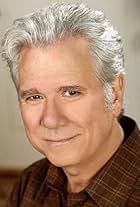

John Larroquette will star in Nantucket Sleigh Ride, a new play by John Guare directed by Jerry Zaks and heading to Lincoln Center Theater’s Off Broadway Mitzi E. Newhouse Theater in February.
The production will reunite Guare and Zaks with the theater company that housed the premieres of Six Degrees of Separation and The House of Blue Leaves. With previews beginning February 21, 2019, and opening Monday, March 18, Nantucket Sleigh Ride will feature a cast of 10.
In addition to Larroquette, the cast will include Clea Alsip, Tina Benko, Adam Chanler-Berat, Jordan Gelber, Grace Rex, Stacey Sargeant, Douglas Sills and Will Swenson. Additional casting will be announced at a later date.
The play’s synopsis: “In his attempts to recover a memory of an event that happened on that ‘far away island’ 35 years before, Nantucket Sleigh Ride plunges a New York playwright-turned-venture capitalist (Larroquette) into a whirlpool of a giant lobster, Roman Polanski,...
The production will reunite Guare and Zaks with the theater company that housed the premieres of Six Degrees of Separation and The House of Blue Leaves. With previews beginning February 21, 2019, and opening Monday, March 18, Nantucket Sleigh Ride will feature a cast of 10.
In addition to Larroquette, the cast will include Clea Alsip, Tina Benko, Adam Chanler-Berat, Jordan Gelber, Grace Rex, Stacey Sargeant, Douglas Sills and Will Swenson. Additional casting will be announced at a later date.
The play’s synopsis: “In his attempts to recover a memory of an event that happened on that ‘far away island’ 35 years before, Nantucket Sleigh Ride plunges a New York playwright-turned-venture capitalist (Larroquette) into a whirlpool of a giant lobster, Roman Polanski,...
- 10/11/2018
- by Greg Evans
- Deadline Film + TV
We cross the plane between the living and the dead in today's Horror Highlights with details on M.L. Miller's new comic book series Gravetrancers, and we also have the 2018 Telluride Horror Show's call for submissions, info on The Philip K. Dick Science Fiction Film Festival's new partnership, and looks at the short films The Ball and The Plague.
Gravetrancers #1: Issue #1 of the new comic book series Gravetrancers is due out on December 13th from Black Mask Studios:
"On a journey to track down the grave of their estranged father, Maribel and Anthony find their way to the Malort Cemetery, a strange, seemingly abandoned field of mostly unmarked tombs. There they encounter an eccentric clan of grave-robbers who’ve devised a highly-addictive drug made from human remains–and the fresher the corpse, the stronger the dose. What started out as an attempt to reconnect with the past becomes a descent into a psychedelic,...
Gravetrancers #1: Issue #1 of the new comic book series Gravetrancers is due out on December 13th from Black Mask Studios:
"On a journey to track down the grave of their estranged father, Maribel and Anthony find their way to the Malort Cemetery, a strange, seemingly abandoned field of mostly unmarked tombs. There they encounter an eccentric clan of grave-robbers who’ve devised a highly-addictive drug made from human remains–and the fresher the corpse, the stronger the dose. What started out as an attempt to reconnect with the past becomes a descent into a psychedelic,...
- 12/8/2017
- by Derek Anderson
- DailyDead
Close-Up is a feature that spotlights films now playing on Mubi. Nele Wohlatz's The Future Perfect (2016), which is receiving an exclusive global online premiere on Mubi, is showing from September 29 - October 29, 2017 as a Special Discovery.Aquí el incierto ayer y el hoy distintoMe han deparado los comunes casosDe toda suerte humana; aquí mis pasosTejen su incalculable laberinto.— Jorge Luis Borges, "Buenos Aires", El otro, el mismo (1964)Nele Wohlatz’s The Future Perfect opens with a wide shot of the Río de La Plata. In a far away, indistinguishable point, a ship sails. Later on in the film, we see a clear blue sky with a plane crossing it, leaving its ephemeral vapoury mark. The river and the sky appear as places to which we are all foreign but through which most of us, often inevitably, transit. Xiaobin (Xiaobin Zhang) is one of them, a Chinese teenager who has...
- 10/7/2017
- MUBI

Jim Jarmusch’s ‘Paterson’ And ‘Gimme Danger’: How Two New Films Speak to the Artistic Process — Nyff

The following essay was written by a participant in the 2016 New York Film Festival Critics Academy, a workshop for aspiring critics co-produced by IndieWire, the Film Society of Lincoln Center and Film Comment.
Jim Jarmusch is no stranger to making films about artists or films that reference other works of art: “Dead Man’s” protagonist is named after the English poet William Blake, in “Ghost Dog: Way of the Samurai,” Jarmusch pays homage to Seijun Suzuki’s “Branded to Kill,” and “Only Lovers Left Alive” has a vampire protagonist who doubles as a famous rock musician. Jarmusch’s latest two films which, played at the New York Film Festival this year—“Gimme Danger” and “Paterson” — continue this pattern of making a film about artists. What ultimately ties all these works together is a nostalgic longing for old art, and this can be seen through references Jarmusch’s films make...
Jim Jarmusch is no stranger to making films about artists or films that reference other works of art: “Dead Man’s” protagonist is named after the English poet William Blake, in “Ghost Dog: Way of the Samurai,” Jarmusch pays homage to Seijun Suzuki’s “Branded to Kill,” and “Only Lovers Left Alive” has a vampire protagonist who doubles as a famous rock musician. Jarmusch’s latest two films which, played at the New York Film Festival this year—“Gimme Danger” and “Paterson” — continue this pattern of making a film about artists. What ultimately ties all these works together is a nostalgic longing for old art, and this can be seen through references Jarmusch’s films make...
- 10/19/2016
- by Anthony Dominguez
- Indiewire
Yet another European art film director tries his hand at cerebral Sci-fi. Alain Resnais' openly experimental movie uses a generic time travel framework to, what else, explore the phenomenon of memory. Suicidal melancholic Claude Rich is projected back exactly one year, for exactly one minute. What could go wrong? Je t'aime, je t'aime Blu-ray Kino Classics 1968 / Color /1:66 widescreen / 94 min. / Street Date November 10, 2015 / available through Kino Lorber / 29.95 Starring Claude Rich, Olga Georges-Picot, Anouk Ferjac. Cinematography Jean Boffety Film Editors Albert Jurgenson, Colette Leloup Original Music Krzysztof Penderecki Written by Jacques Sternberg, Alain Resnais Produced by Mag Bodard Directed by Alain Resnais
Reviewed by Glenn Erickson
My very first UCLA film class in the Fall of 1970 dispatched us to the Vagabond Theater to see a double bill of two 'art' movies that play fast and loose with narrative conventions: Luis Buñuel's Ensayo de un Crimen and Alain Resnais' Je t'aime,...
Reviewed by Glenn Erickson
My very first UCLA film class in the Fall of 1970 dispatched us to the Vagabond Theater to see a double bill of two 'art' movies that play fast and loose with narrative conventions: Luis Buñuel's Ensayo de un Crimen and Alain Resnais' Je t'aime,...
- 11/3/2015
- by Glenn Erickson
- Trailers from Hell

It’s been just under a year since I last interviewed comics writer Ales Kot, but the shaven-headed Czech seems noticeably more mature now. He’s still one of the comics industry’s most-buzzed-about young guns, but rather than raving about the revelatory power of hallucinogens, he’s more into discussing prison reform. He’s still creating comics that are challenging and unconventional, but instead of tales about spies and Marvel superheroes, he’s doing indie work about race, class, and torture. The 28-year-old Kot’s transformation isn’t surprising, as he’s had quite the year. He’s suffered from a debilitating bout of Lyme disease. Just as he was becoming one of Marvel’s biggest up-and-coming stars, he took a leap of faith and quit the company after wrapping up an acclaimed 15-issue run on Marvel’s Secret Avengers (which was more about Ptsd and Jorge Luis Borges...
- 7/21/2015
- by Abraham Riesman
- Vulture
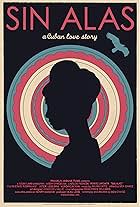

A man is haunted by a woman, and a melody. He is a writer, and she is the ballerina he fell in love with 40 years ago after he saw her dance to a particular tune that, nearly half a century later, is wafting back into his mind by way of a dream. In writer/director Ben Chace's arresting "Sin Alas," we find the aging author Luis Vargas (Carlos Padrón) in Havana, Cuba, opening his newspaper to learn that the ballerina haunting his brain, Isabela Munoz (Yulisleyvís Rodrigues), has died. The news startles him into revisiting his buried past, and the bourgeois life he shed to pursue political revolution as a young man. Part mystery, part ghost tale, this seductive film draws inspiration less from film than from postmodern literature, specifically from the freely flowing writings of Jorge Luis Borges, the Argentine midcentury author of slippery tales including the stories in "Ficciones" and "Labyrinths.
- 6/16/2015
- by Ryan Lattanzio
- Thompson on Hollywood
Ales Kot is one of the freshest, most cerebral voices in comics. He cut his teeth on DC Comics’ Suicide Squad with a run focused on the demented serial killer Jim Gordon Jr. before taking his talents to Marvel. Kot wrote two of their quirkiest titles, namely, Secret Avengers, which made supervillain Modok a full-fledged Avenger and had a good mix of references to Jorge Luis Borges and Nick Fury Jr. and Agent Coulson having existential crises in the middle of space. Speaking of space, he has also written Bucky Barnes, Winter Soldier, which followed the titular character’s trippy adventures on distant planets depicted in the style of Heavy Metal by artist Marco Rudy.
But Kot has also worked on creator owned comics as part of the Image Comics renaissance. Zero is an espionage series created by him and his Secret Avengers collaborator Michael Walsh and has found critical and commercial success.
But Kot has also worked on creator owned comics as part of the Image Comics renaissance. Zero is an espionage series created by him and his Secret Avengers collaborator Michael Walsh and has found critical and commercial success.
- 6/8/2015
- by Logan Dalton
- SoundOnSight

The sculptures of Gonzalo Fonseca — hand-carved blocks of marble and limestone riddled with secret compartments, moveable pieces, mysterious emblems, and tiny staircases — look like Paleolithic dollhouses designed by M.C. Escher. They don’t quite make sense, but they radiate an internal logic so seductive it’s hard not to feel as though you once encountered them in a dream, wandering through the works like abandoned cities. While Fonseca enjoyed a one-man show at the Jewish Museum in 1979 and represented his native Uruguay in the 1990 Venice Biennale, after his death in 1997, his work has lapsed into obscurity. A forgotten man who made mazes, Fonseca could have emerged from the pages of Jorge Luis Borges. The lost artist is poised to make a dramatic resurgence, however, with a new documentary directed by Michael Gregory. Slated for the 2016 festival circuit, the film is one prong of a full-blown Fonseca...
- 5/28/2015
- by Zoë Lescaze
- Vulture
IMDb.com, Inc. takes no responsibility for the content or accuracy of the above news articles, Tweets, or blog posts. This content is published for the entertainment of our users only. The news articles, Tweets, and blog posts do not represent IMDb's opinions nor can we guarantee that the reporting therein is completely factual. Please visit the source responsible for the item in question to report any concerns you may have regarding content or accuracy.
